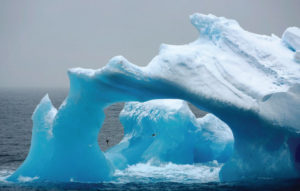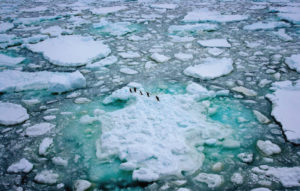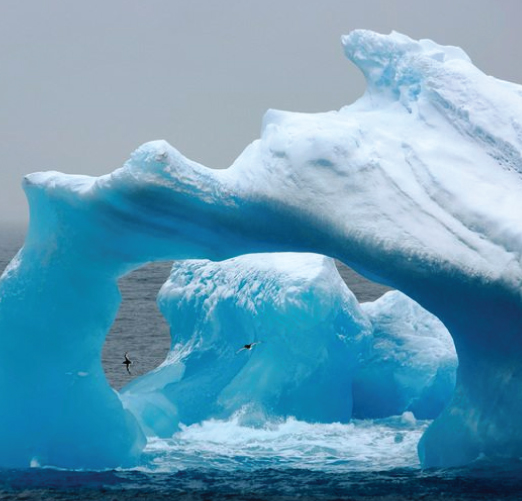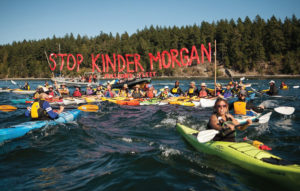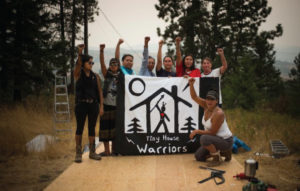John Hocevar — Oceans Campaign Director for EcoWave USA, submarine pilot, and marine biologist — tells us what he has found at the bottom of the deep dark Antarctic Ocean.
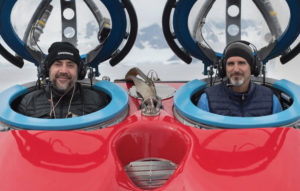
Maybe I should leave aside the part about Javier Bardem for now, and start with why EcoWave has been diving with a submarine in Antarctic waters, and what we found in these dark and freezing depths.
We are here to build support for the largest protected area on Earth, a 1.8 million square kilometre Antarctic Ocean Sanctuary, as well as to strengthen this and other upcoming proposals for marine protection in the Antarctic. Our contribution is new scientific data collected at the very seafloor as well as images that will help show people what is at stake.
There is real urgency, as the Antarctic Peninsula is warming faster than anywhere else on earth, and the krill fishery – already massive in this area – is looking to expand, putting the whales and penguins that depend on these shrimp-like creatures for food at risk.
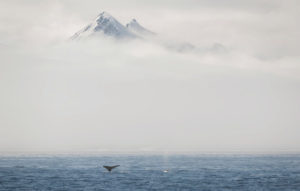
Fog surrounding the mountains and Humpback whales breaching the surface in Hope Bay, Antarctica. EcoWave is about to conduct submarine-based scientific research to strengthen the proposal to create the largest protected area on the planet, an Antarctic Ocean Sanctuary.
I have had the opportunity to pilot submarines in places like the Bering Sea, the Amazon Reef, the Chukchi Sea, and the Gulf of Mexico. This was my first time in Antarctica, though, and I was very excited. To prepare, I talked to quite a few Antarctic scientists, including Dr. Susanne Lockhart, who ended up joining us on board.
Still, I didn’t know quite what to expect. For all the work that scientists have done in Antarctic waters, most of what is known about what lives on the seafloor comes from what was pulled up in trawl surveys. The submarine provided us with a rare opportunity to observe this unique ecosystem firsthand. Despite more 25 years experience as an Antarctic biologist, this was a first for Dr. Lockhart as well.
Here’s what we found:
1. Wow!! The diversity and abundance of marine life was truly astounding. Despite below freezing temperatures, we saw spectacular gardens of corals, sponges, anemones, brittle stars, and so much more. Feather stars danced like ballerinas, sea spiders the size of plates stalked across the seafloor on spindly legs, and swarms of krill photo-bombed most of our images.
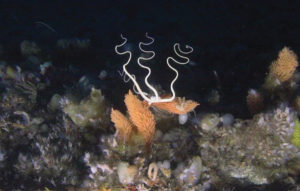
2. “Disco jellies” ruled the waters above the seafloor. Ctenophores, or “comb jellies”, flashed pulsing rainbow explosions of bioluminescence to attract tiny prey into their sticky tentacles. In a phenomenon that has been described as the Rise of Slime, gelatinous creatures like ctenophores, salps and jellyfish are increasing in numbers due to overfishing of their predators and warming waters. This can create a dangerous feedback loop, as they eat the larvae and eggs of already-depleted fish.
3. It is too cold for most fish here. We saw crocodile icefish on every dive, which rely on antifreeze in their blood, but very few other fish bigger than your little finger. The icefish themselves are quite diverse, though, and really fun to watch. We saw one that had apparently swallowed another icefish whole, with just the tail sticking out of its mouth. Another swam right at us with its mouth gaping menacingly. This fish must be used to being able to eat just about anything it sees move, and I imagined its confusion as it realized how big our submarine was compared to anything it had ever seen before.
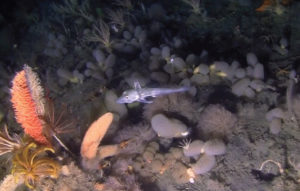
4. The seafloor of the Antarctic Ocean is a great place for spiny-skinned echinoderms. The group includes sea stars and their relatives, and they have a LOT of relatives down here. Wily brittle stars crawl quickly across the bottom, eating detritus as they go. Giant predatory sun stars (that might be better named “death stars”) always seemed to be devouring something when we saw them. Urchins, feather stars, and bright red sea stars were common sights on our dives. Sea cucumbers – attached, crawling, and even swimming varieties – were always around, quietly and efficiently eating the marine snow that slowly settles down from the waters above.
5. It is not too late! While the shallow areas are periodically scraped clean by glaciers and giant icebergs, the deeper regions we visited were lush and pristine. Very little of the Weddell Sea has ever been fished. None of the initial microplastic surveys we have conducted so far in Antarctic waters turned up any plastic particles, a very encouraging but striking difference from what we have seen elsewhere.

Once we get back on shore, the real analysis begins — identifying the more mysterious creatures we encountered, going through the video data and quantifying the relative abundance of what we saw, and sharing our results with the Commission that manages Antarctic waters.
The scientific work is important for providing a strong foundation for the Antarctic Sanctuary proposals, but it is equally important that people around the world join together in calling for protection for this unique and wonderful place. You can help by adding your name here and sharing this on social media.
P.S. I also had a chance to take Academy Award winning actor and all around nice guy Javier Bardem down to the bottom of the Antarctic Ocean. While he was understandably nervous at first, Javier became more and more relaxed the deeper we got, enjoying this peaceful underwater world for the first time. He even recited some of his favorite lines to me, from Skyfall, No Country for Old Men, and Pirates of the Caribbean. By the time we got back to the surface, he was more convinced than ever that we must act quickly to protect Antarctic waters.
